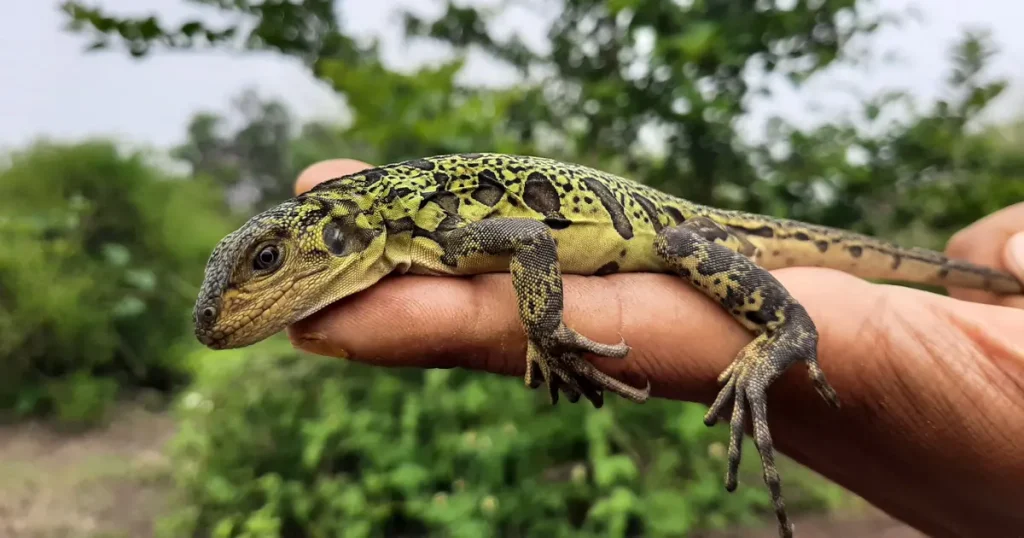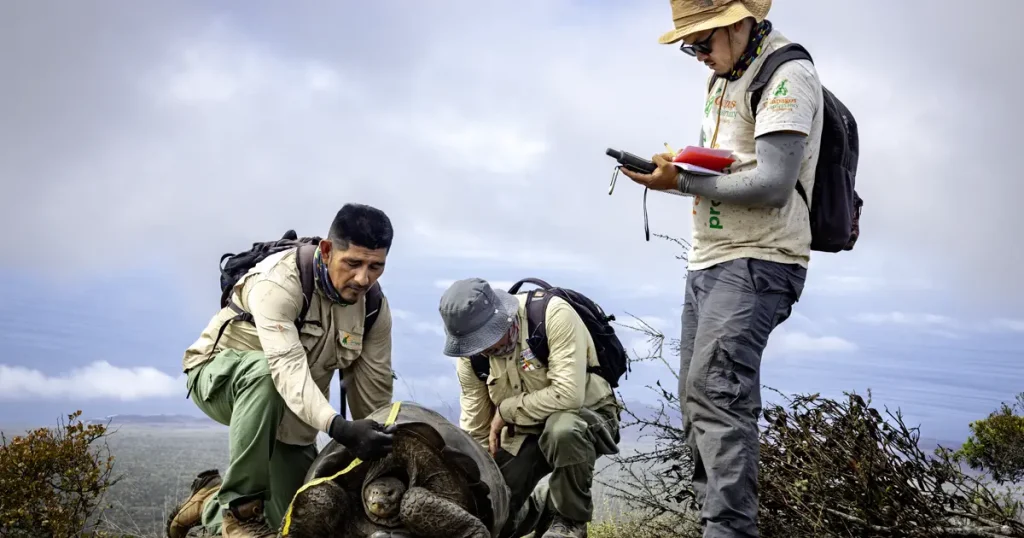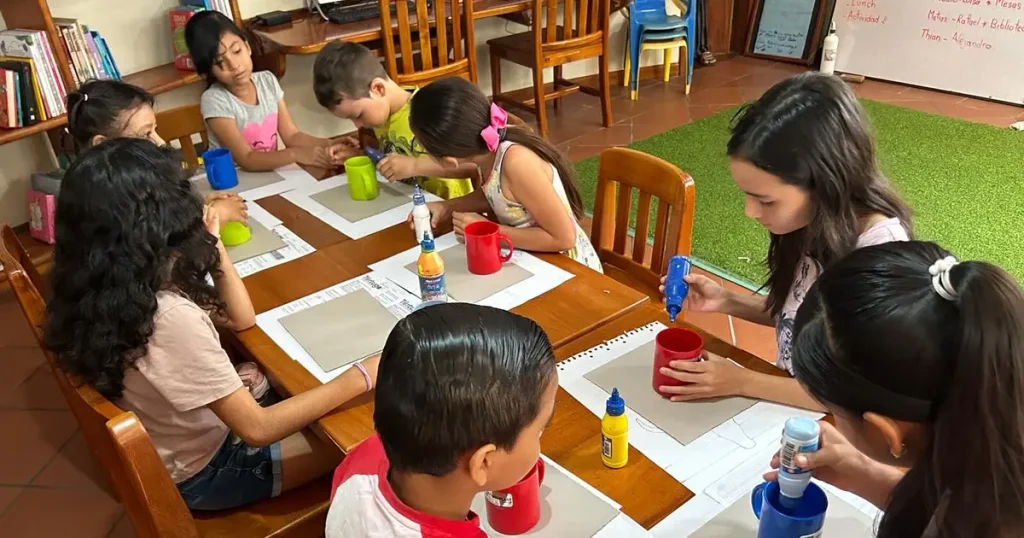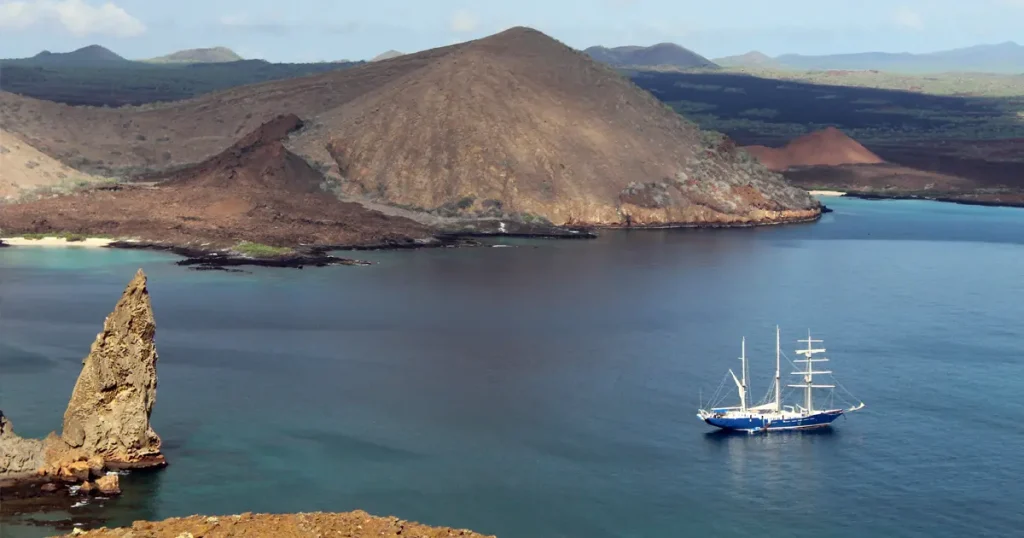Santiago Island
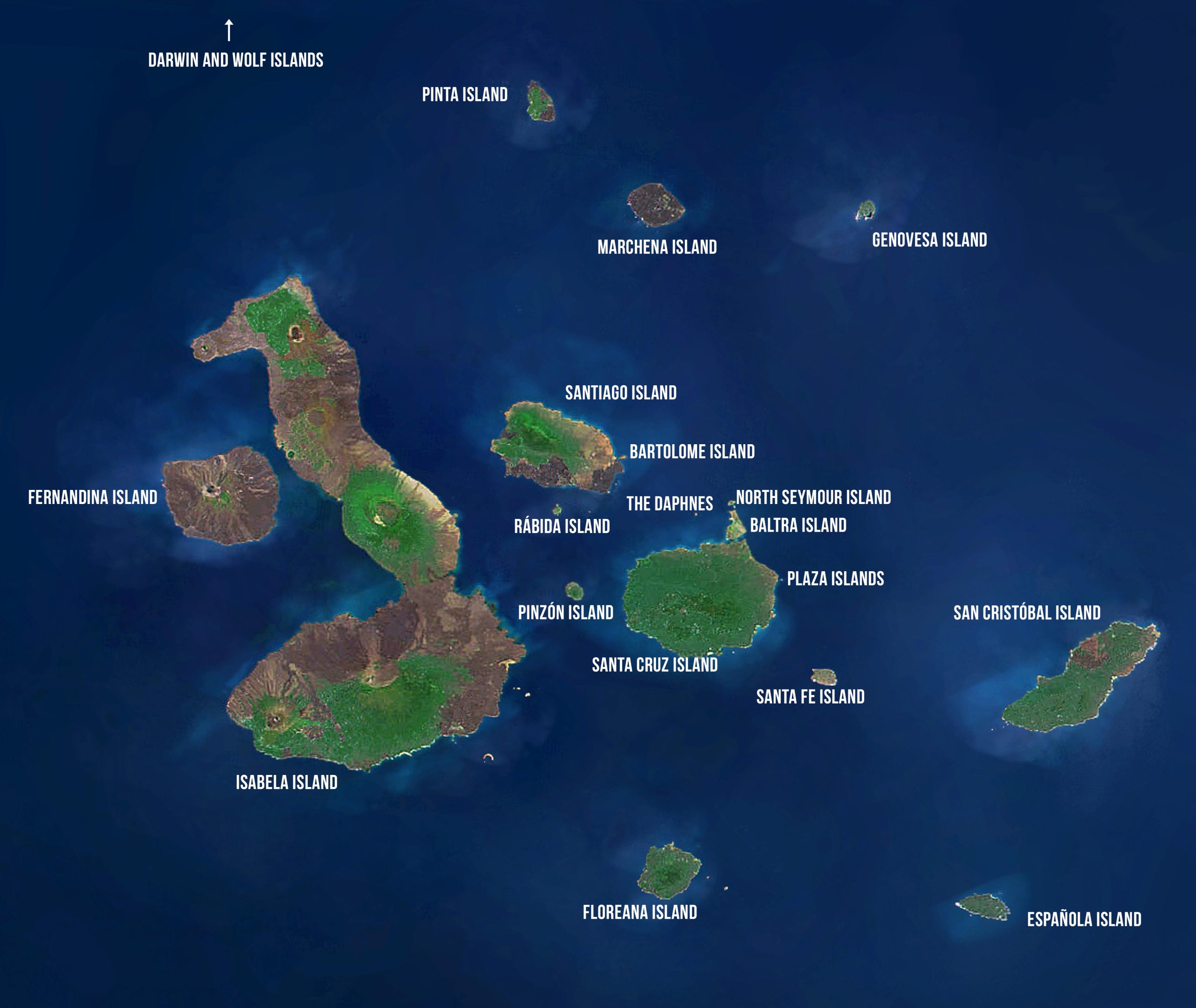
Santiago Island
Area: 572 km2 or 221 mi2
Maximum Altitude: 905 m or 2974 ft
Human Population: 0
HISTORY
Santiago, originally named James Island after England’s King James II, was the second of the Galápagos Islands visited by Charles Darwin. The Beagle arrived there on October 5, 1835. There they found a party of Spaniards who had come from Charles Island to dry fish and salt tortoise meat. About 6 mi inland they discovered two men living in a hovel, who were employed catching tortoises. Santiago had long been a source of water, wood, and tortoises for buccaneers and whalers, as well as Captain Porter of the USS Essex from 1812-1814. The Spaniards showed Darwin and his group the salt mine, now a visitor site. Darwin’s record of land iguanas is the only one that indicates there was a thriving population, as today land iguanas are extinct on Santiago. In The Voyage of the Beagle, Darwin wrote, “I cannot give a more forcible proof of their numbers, than by stating that when we were left at James Island, we could not for some time find a spot free from their burrows on which to pitch our single tent.”
During the 1920s and again in the 1960s, companies extracted salt from the Salt Mine Crater. They constructed roads and buildings at Puerto Egas, named for Hector Egas, the owner of the company that worked there in the 1960s. In the 1930s, a small group of people tried to colonize the island but ultimately failed. Their story is told in the book The Enchanted Islands: A Five-year Adventure in the Galapagos by Ainslie and Frances Conway. Goats, pigs, and donkeys were released on Santiago in the 1800s, causing havoc for the island ecosystem and many of its native species.
TODAY
Santiago is visited by the majority of tourist boats with wonderful visitor sites at James Bay on the northwest and Sullivan Bay on the southeast. Puerto Egas at the south end of James Bay provides one of the best opportunities for visitors to see the Galápagos fur seal. The focus of conservation work on Santiago in the last decade has resulted in rapid recovery of much of the vegetation and many of the native species. However, the presence of introduced plants and black rats continue to cause problems within the natural ecosystem. Santiago also has several satellite islands, especially in the southeastern side of the island. Two of these, Bartolomé and Chinese Hat, are visitor sites, while others provide excellent dive sites.
CONSERVATION HISTORY AND CHALLENGES
Of the uninhabited islands, Santiago’s history of introductions and exploitation of natural resources is most similar to the inhabited islands. This is, in part, because of the companies mining salt there in the 1920s and the attempt at colonization in the 1930s. However, it began long before that with the exploitation of giant tortoises and the introduction of goats, pigs, donkeys, rats, and mice. Introduced plants, some arriving with the colonization attempts, have also spread throughout the island. By the establishment of the Galápagos National Park in 1959, the giant tortoise population of Santiago had been reduced to some 500 animals, with a predominance of males. Nesting was generally unsuccessful due to predation by pigs. The Santiago tortoises were soon included in the tortoise rearing and repatriation program; rock walls were also built around their natural nests to protect them from pigs.
Over decades goats destroyed the natural woodlands, creating grasslands across the higher elevations of the island. Pigs systematically destroyed nests of many of the native species, including giant tortoises, sea turtles, and Galápagos petrels, among others. Attempts at goat and pig control were carried out by the Galápagos National Park beginning in the 1980s. However, it was not until more modern eradication technologies were applied as part of Project Isabela that complete eradication of goats, pigs, and donkeys was achieved. The island was declared pig-free in 2000, and goat- and donkey-free in 2006. The restoration of the vegetation is rapidly occurring, although there is now a problem with some of the introduced plant species that had been held in check by the goats.
Galápagos rails have also made a comeback in the highlands and nesting of native species is more successful. For decades it was believed that on all islands with black rats, the endemic rice rat had gone extinct. However, a remnant population of rice rats was discovered on Santiago in 1997. The challenge today is to ensure that this population continues to survive in spite of the presence of black rats.
Visitor Sites: James Bay – Puerto Egas (Fur Seal Grottoes and Salt Mine Crater) and Playa Espumilla
There are three visitor sites at James Bay. Espumilla Beach on the north end of the bay is a sea turtle nesting site. The trail inland passes a small seasonal lagoon where flamingos and white-cheeked pintail ducks are sometimes seen. The trail continues in a loop through the arid zone where it is possible to view many land birds. At the southern end of the bay is Puerto Egas where two separate trails take off, the first along the coast to the fur seal grottoes and the second inland to the Salt Mine Volcano. The Galápagos fur seal prefers rocky coastlines where shade is available and the grottoes at Puerto Egas are ideal. The coastal trail ends at the grottoes. The inland trail is approximately 3 km long and ends at the top of the salt mine crater. During the 1920s and 1960s, companies extracted salt from the crater. Puerto Egas is named for the 1960s company owner, Hector Egas. The mine is a small volcanic cone whose crater has a seasonal, salt-water lagoon, where flamingos and other birds can be seen. Galápagos hawks are often observed in the area.
Visitor Site: Sullivan Bay
The Sullivan Bay visitor site provides a unique opportunity to walk across a recent lava flow and view its beautiful structural characteristics. The lava flow was formed in the second half of the 19th century. As much of the barren, volcanic landscape of eastern Santiago, the trail at Sullivan Bay crosses relatively flat, black pahoehoe lava, dotted with a series of pyroclastic cones. Along the inland section of the trail, older, reddish-yellow-colored tuff cones stand out in the middle of the lava flow. Tiny Molluga plants can be spotted growing out of the fissures as they begin to colonize this barren terrain. Although there is little wildlife to speak of and lava is the main focus of the visit – don’t forget to bring your camera.
Visitor Site: Chinese Hat
Chinese Hat or Sombrero Chino is a small island approximately 200 m off the southeastern coast of Santiago. The small channel of turquoise water provides a beautiful snorkeling site, particularly along the Santiago coast where it is possible to see sharks, sea lions, penguins, and rays. Chinese Hat is a small islet composed of delicate lava and spatter cones. Seen from the north, the small volcanic cone is the shape of a Chinese Hat. The short visitor trail runs along the west coast of the island.
Marine Visitor Site: 7 sites
Santiago has 7 separate marine dive sites, primarily on the north and southeast ends of the island. The sites, Puerto Egas, Albany Islet, Piedra Blanca at Buccaneer Cove, Cousins Rocks, Bainbridge Rocks, Don Ferdi Rock, and Beagle Rocks provide viewing of sea lions, fur seals, sea turtles, rays, sharks, pelagic fishes, and some amazing underwater geologic formations.
Conservation Site: Pig, goat and donkey eradication
Goats, pigs, and donkeys were introduced to Santiago in the 1800s and early 1900s. Each species wreaked havoc on both the flora and the fauna. Goats destroy habitat, cause massive erosion, and compete with native herbivores, including the giant tortoise. Pigs dig up both giant tortoise and sea turtle nests and destroy both eggs and hatchlings, dig into Galápagos petrel nests in the highlands, and destroy other ground-nesting birds. Donkeys are particularly destructive to Opuntia cactus in the arid zones. The presence of these species on Santiago had created an ecosystem very different from the pristine condition. A major component of Project Isabela was the final eradication of all three species from Santiago with completion in 2006. Since then there has been a rapid recovery of the vegetation, including some of the threatened endemics found only on Santiago. However, several introduced plants have also increased due to the absence of these introduced herbivores. Current conservation efforts must work to control the further spread of these introduced plants, in particular, Rubus niveus, a type of raspberry known locally as “mora.” This species currently covers 28 ha, but without control actions, it could spread over the entire humid zone of Santiago resulting in ecological disaster.
Conservation Site: Endemic rats
Santiago was the site of the first introduction of black rats, at James Bay in the late 1600s. Today the black rat is known to occur on at least 33 islands and islets in the archipelago. The most catastrophic decline of any vertebrate taxon in Galápagos has involved the multiple extinctions of the endemic rice rats, believed to have occurred as a result of the introduction of black rats. The Santiago rice rat (Nesorysomys swarthi) was considered extinct until it was rediscovered in a relatively small area on the eastern coast in 1997. It is the only known endemic rat species that has managed to coexist with black rats. However its population is small and it is confined to a relatively small area. Monitoring and potential intensive management of this population is critical. Eventual eradication of black rats would be the ideal management solution.
